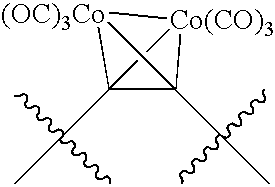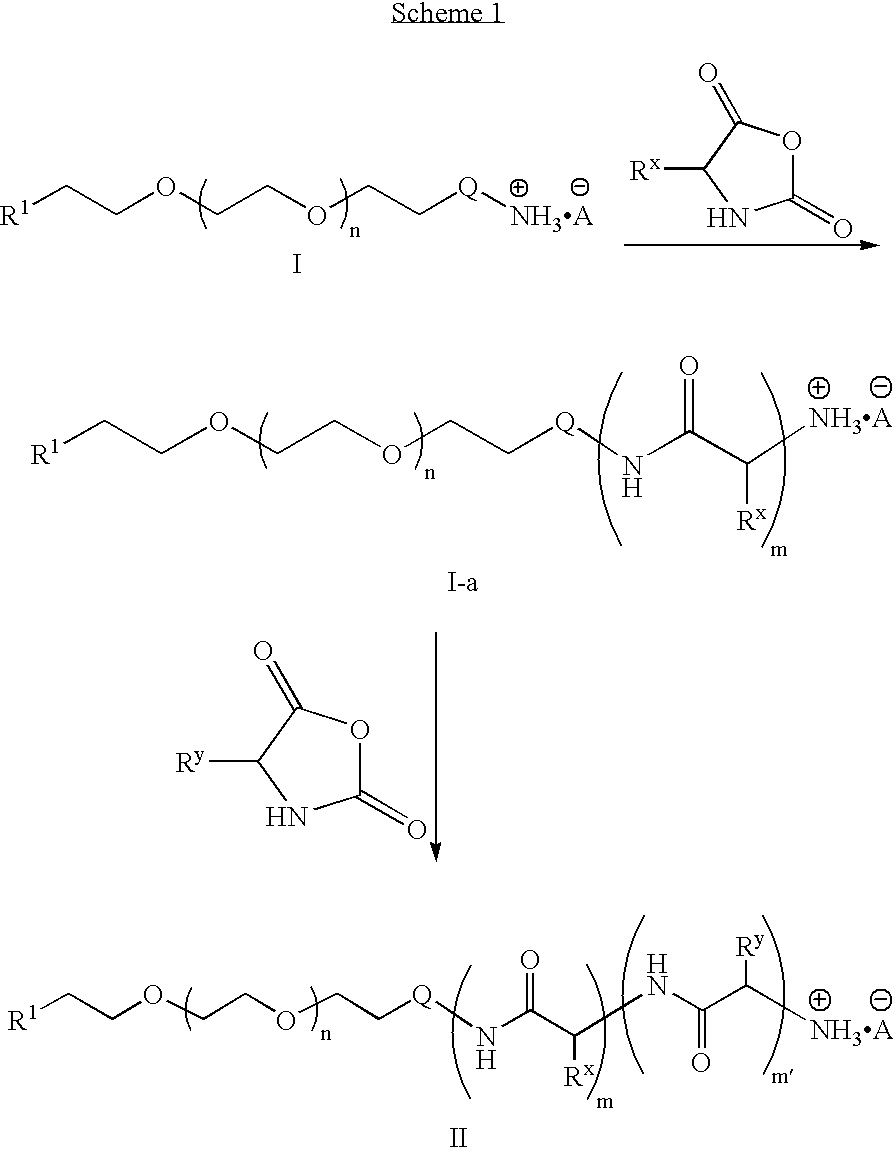Synthesis of hybrid block copolymers and uses thereof
a technology of hybrid block and copolymer, which is applied in the field of polymer chemistry, can solve the problems of long time period for reagent purification and complete polymerization to be achieved, difficult preparation of poly(amino acids) synthesized using high vacuum techniques, and undesirable use of organometallic initiators and catalysts
- Summary
- Abstract
- Description
- Claims
- Application Information
AI Technical Summary
Problems solved by technology
Method used
Image
Examples
example 1
To a dried 100 mL round bottom flask equipped with a stir bar, septum and inlet adapter was added PEG-amine hydrochloride (2.13 g, 0.21 mmol) and t-butyl aspartic acid NCA (0.46 g, 2.1 mmol). The contents were dried under vacuum for 1 hour and backfilled with N2. Anhydrous dimethylformamide (DMF) (25 mL) was added via syringe and the reaction was heated to 80° C. After 48 hours, an aliquot was removed and the polymer molecular weight was determined to be 12,400 g / mol (PDI=1.10) by size exclusion chromatography in dimethylacetamide (DMAc). Phenylalanine NCA (0.98 g, 5.1 mmol) and t-butyl tyrosine NCA (0.34 g, 1.3 mmol) were placed in a 50 mL round bottom flask and dried under vacuum for 1 hour. The two monomers were dissolved in anhydrous DMF (15 mL) then transferred to the reaction vessel containing the PEG-b-poly(aspartic acid) copolymer. The reaction was stirred for 48 hours at 80° C. The solution was allowed to cool to room temperature, precipitated into diethyl ether (500 mL), ...
example 2
To a dried 100 mL round bottom flask equipped with a stir bar, septum and inlet adapter was added acetylene-PEG-aniline hydrochloride (2.13 g, 0.21 mmol) and t-butyl aspartic acid NCA (0.46 g, 2.1 mmol). The contents were dried under vacuum for 1 hour and backfilled with N2. Anhydrous DMF (25 mL) was added via syringe then the reaction heated to 80° C. After 48 hours, an aliquot was removed and the polymer molecular weight was determined to be 11,900 g / mol (PDI=1.12) by size exclusion chromatography in DMF. Phenylalanine NCA (0.98 g, 5.1 mmol) and t-butyl tyrosine NCA (0.34 g, 1.3 mmol) were placed in a 50 mL round bottom flask and dried under vacuum for 1 hour. The two monomers were dissolved in anhydrous DMF (15 mL) and transferred to the reaction vessel containing the PEG-b-poly(aspartic acid) copolymer. The solution was stirred for 48 hours at 80° C. The solution was allowed to cool to room temperature, precipitated into diethyl ether (500 mL), filtered, and dried in vacuo. The...
example 3
Example 4
PUM
| Property | Measurement | Unit |
|---|---|---|
| Cell angle | aaaaa | aaaaa |
| Hydrophilicity | aaaaa | aaaaa |
Abstract
Description
Claims
Application Information
 Login to View More
Login to View More - R&D
- Intellectual Property
- Life Sciences
- Materials
- Tech Scout
- Unparalleled Data Quality
- Higher Quality Content
- 60% Fewer Hallucinations
Browse by: Latest US Patents, China's latest patents, Technical Efficacy Thesaurus, Application Domain, Technology Topic, Popular Technical Reports.
© 2025 PatSnap. All rights reserved.Legal|Privacy policy|Modern Slavery Act Transparency Statement|Sitemap|About US| Contact US: help@patsnap.com



